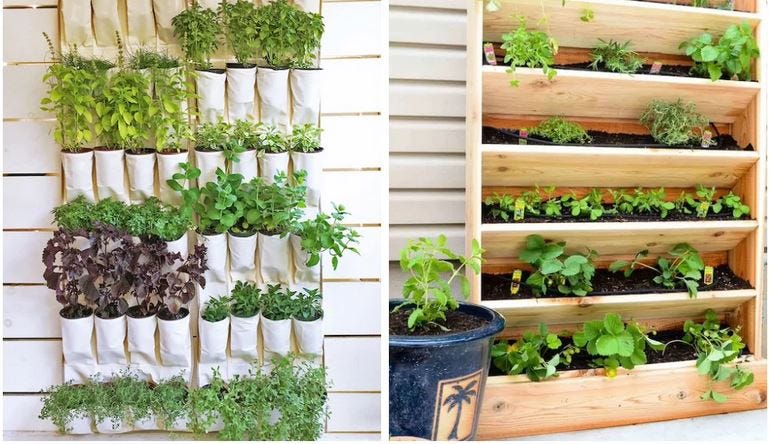Vertical Gardening: Maximizing Space with Creative Planting Solutions

In urban environments and limited garden spaces, traditional horizontal gardening may not always be feasible. However, with vertical gardening, you can transform even the smallest of spaces into lush, green oases bursting with life. Vertical gardening involves growing plants vertically, either on walls, trellises, fences, or in specially designed vertical planters. Not only does vertical gardening maximize space, but it also adds visual interest to your outdoor or indoor areas. Here’s how you can get started with vertical gardening and unleash your creativity:
1. Choose the Right Location: Before you begin your vertical garden project, consider the available space and lighting conditions. Choose a location that receives adequate sunlight for the types of plants you intend to grow. South-facing walls or areas with partial shade are ideal for most plants.
2. Select Suitable Plants: When selecting plants for your vertical garden, opt for varieties that thrive in your local climate and growing conditions. Herbs, succulents, ferns, and trailing vines are excellent choices for vertical gardening due to their adaptability and space-saving nature.
3. Build or Install Vertical Structures: Depending on your space and budget, you can create vertical structures using trellises, lattice panels, or repurposed materials such as pallets and old ladders. Alternatively, you can purchase ready-made vertical planters or living wall systems designed specifically for vertical gardening.
4. Consider Drainage and Watering Needs: Ensure proper drainage for your vertical garden by using containers with drainage holes or adding a layer of gravel at the bottom of each planter. Since vertical gardens may dry out more quickly than traditional gardens, consider installing a drip irrigation system or hand-watering regularly to keep plants hydrated.
5. Arrange Plants Thoughtfully: Arrange your plants strategically to create visual interest and balance in your vertical garden. Mix different plant shapes, sizes, and textures to add depth and dimension. Place taller plants towards the back or center of your vertical structure, with trailing or cascading plants towards the edges for a cascading effect.
6. Provide Structural Support: Ensure that your vertical structures are securely anchored to walls or supports to prevent them from toppling over. Use sturdy hooks, brackets, or anchors to attach trellises or planters to walls or fences, especially if you live in windy or storm-prone areas.
7. Maintain and Care for Your Garden: Regular maintenance is essential for keeping your vertical garden healthy and thriving. Monitor plants for signs of pests, diseases, or nutrient deficiencies, and take prompt action to address any issues. Prune and trim plants as needed to promote growth and maintain their shape.
8. Get Creative with Design: Don’t be afraid to get creative with your vertical garden design! Experiment with different plant combinations, colors, and arrangements to create a unique and personalized space. Consider adding decorative elements such as artwork, mirrors, or lighting to enhance the aesthetic appeal of your vertical garden.
Conclusion: Vertical gardening offers a versatile and space-saving solution for maximizing greenery in urban environments and small garden spaces. With careful planning, creativity, and a bit of maintenance, you can create a stunning vertical garden that brings beauty and life to any indoor or outdoor space. Whether you’re growing herbs, flowers, or vegetables, vertical gardening allows you to unleash your creativity and enjoy the rewards of gardening in a whole new way.
Picture Courtesy: Google/images are subject to copyright








